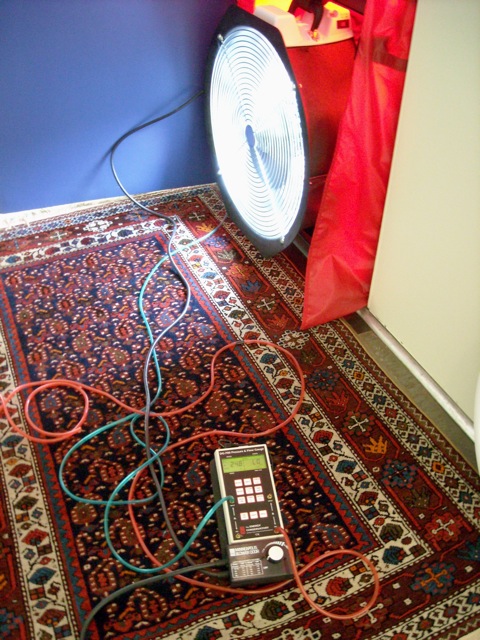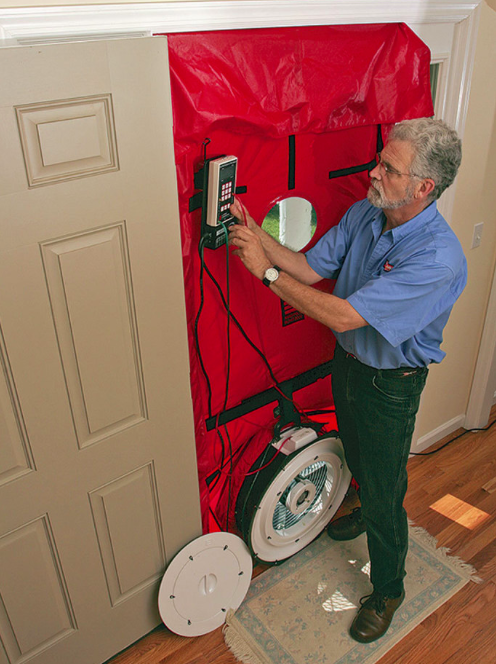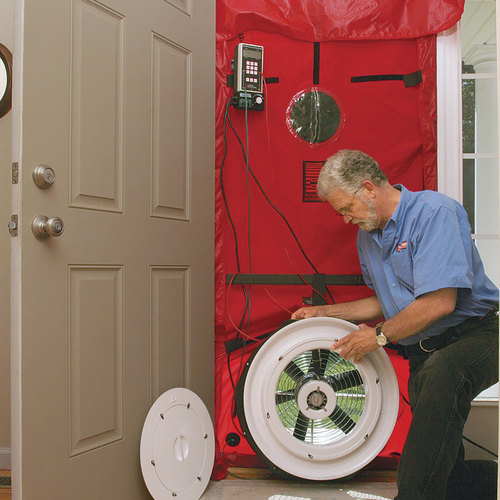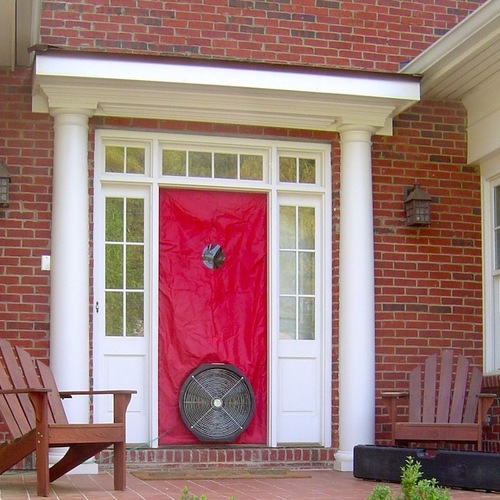
Image Credit: Allison A. Bailes III, PhD
OK, the title here may be a little extreme, but if you’ve taken a look at the new chapter on performance testing and scope of work in the HERS Standards, you know what I’m talking about. RESNET just adopted this as the new chapter 8 in August of this year, and it goes into effect on 3 January 2012.
As a physicist, I love the new rigor they’ve added to the protocol for doing blower door tests. If you ever took an introductory physics class and the associated lab, you probably remember with great fondness the statistical analysis you had to learn. (What!? You hated that part? I just don’t get you at all!)
Anyway, measurement is a science in and of itself that follows some fundamental rules:
- Every piece of equipment will give you a measurement with some uncertainty.
- Measuring something once doesn’t give you the absolute, final, correct result.
- To improve reproducibility, the measurer must pay great attention to the conditions under which the measurement was made.
With the new standards on blower door testing, RESNET is acknowledging that these rules apply to home energy raters as well as the folks who wear white coats. (Actually, I call the latter chemists. Physicists mostly just wear whatever they want.)
So, what’s new for all you blower door testers out there? Here’s a brief summary.
Three types of tests
Single-point test. Measure the air leakage one time at a given pressure difference, usually 50 Pascals. You have to measure the baseline pressure 5 times, but that doesn’t take long.
Multi-point test. Measure the air leakage at multiple pressure differences, from 60 Pa down to 15 Pa in 5 Pa increments. You’ll have to measure the baseline pressure difference before and after taking the air leakage readings, but you don’t adjust for the individual pressure readings.
Repeated single-point test. Measure the air leakage at least five times at a single pressure difference and then do a statistical analysis of the results. Calculate the mean, standard deviation of the mean, and uncertainty.
Two types of accuracy
Standard accuracy. Under normal test conditions, you’ll get results with an acceptable level of uncertainty. You can use the result in a certified home energy rating, and the software doesn’t modify it. When doing a single-point test, if your baseline pressure difference is less than 5.0 Pa, you’re in the realm of standard accuracy. For a multi-point test or repeated single-point test, you get to report the result here if the corrected cfm50 has an uncertainty less than 10%.
Reduced accuracy. On really windy days or when other conditions cause your uncertainty to be too high, you report the result as having reduced accuracy. If you’re doing a certified home energy rating with reduced accuracy, the software will add about 10% to the result to determine if the home complies with the thresholds required in energy codes or programs. If the baseline pressure difference is between 5.0 and 10.0 Pa for a single-point test, you’ve got reduced accuracy. (If the baseline is >10.0 Pa, you can’t do a single-point test.) For a multi-point test or repeated single-point test, an uncertainty of more than 10% means the accuracy is reduced.
Two corrections
Altitude. If you’re doing a blower door test at high elevations (that is, anything higher than 5000 feet above sea level), you’ll have to apply a correction factor to your air leakage. (Yeah, they’re talking to you, Steve Byers and your Energy Logicians!)
Temperature. If you’re testing on a really cold or a really hot day, you’ll have to adjust for that, too. When the temperature difference, ΔT, is greater than 30° F, you must adjust. (See the tables on page 8-9.)
As I said above, I see the new rigor in the HERS Standards as a good thing. It may take some retraining of the field guys who go out and do blower door tests all day long, but it’ll be worth it. We’ll be adding these new procedures to our training starting with our next HERS rater class. If you do any type of performance testing under the auspices of the HERS Standards, you don’t have to be a scientist or engineer…but you’ll have to start thinking like one.
Allison Bailes of Decatur, Georgia, is a RESNET-accredited energy consultant, trainer, and the author of the Energy Vanguard blog.
Weekly Newsletter
Get building science and energy efficiency advice, plus special offers, in your inbox.















9 Comments
Possibly the best...
article on GBA ... possibly ever! Nicely done.
The primary difference...
..is that Martin is usually wrong.
Great Article, Allison
Not sure what Michael is trying to accomplish here... but this is a great article, along with the many other great articles here at GBA written by yourself, Martin, Tristan, and others.
Thanks!
Thanks, Michael. I don't agree because Martin and the others here have written a lot of really good stuff, but I appreciate the compliment.
what are the errors?
Allison,
I suspect these new standards address some inaccuracies discovered in current practices. (Or maybe these recommendations are based on statistical best practices only).
I'm curious if these new standards were not followed would the results of the blower door test error in a certain direction? is there any sense how much in magnitude a single test could be off?
I guess I'm interested in understanding how to view existing ACH50 results that haven't followed the new standards.
I don't see what Michael's
I don't see what Michael's trying to accomplish, and for my work, I don't see any real changes in this blower door protocol, with a few exceptions. I always run TecTite, and one can enter custom pressures to accomplish the 60pa to 15pa range needed for a multi-point test. I always measure wind speed with an anemometer, and air temperature inside and out. It appears to me that all this asks for is a little more care in measuring baseline, and wind speed/air temp if there are extremes.
Blower Door Tests
My comment to Allison - chemists wear white lab coats so we don't get dirty ... physicists avoid work that gets their hands dirty ... they feel a dirty mind is enough of a burden to bear. But the article is good. I disagree with Michael ... Martin is NOT usually wrong.
Certification question
I'm thinking of having a blower door test done on my house. When I look for a blower door tester, what certifications should I require for the tester?
Response to D Mikulec
D Mikulec,
The two best-known nationwide certification agencies are RESNET and BPI.
If you visit their websites, you will get more information.
Log in or create an account to post a comment.
Sign up Log in